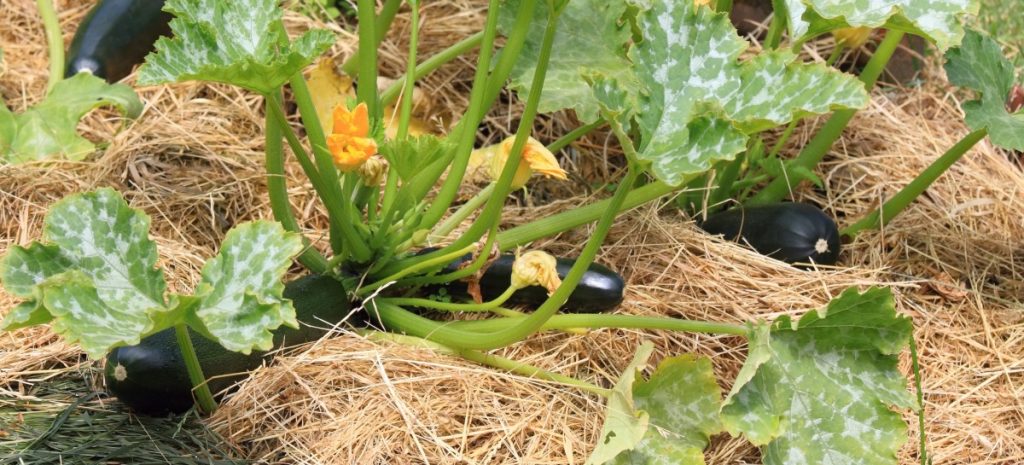You want to have a garden that produces tons of delicious vegetables and herbs.
But so many new gardeners are disheartened when faced with constant weeding and watering. Plus, having to till and fertilize at the start of every growing season.
Deep mulch gardening allows you to enjoy all of the benefits of having a garden without having to spend as much time on those boring and labor-intensive tasks.
In this article, we’ll discuss what the deep mulch gardening method is and its pros and cons. Plus, we’ll go over how to make use of the deep mulch gardening technique in your own garden.
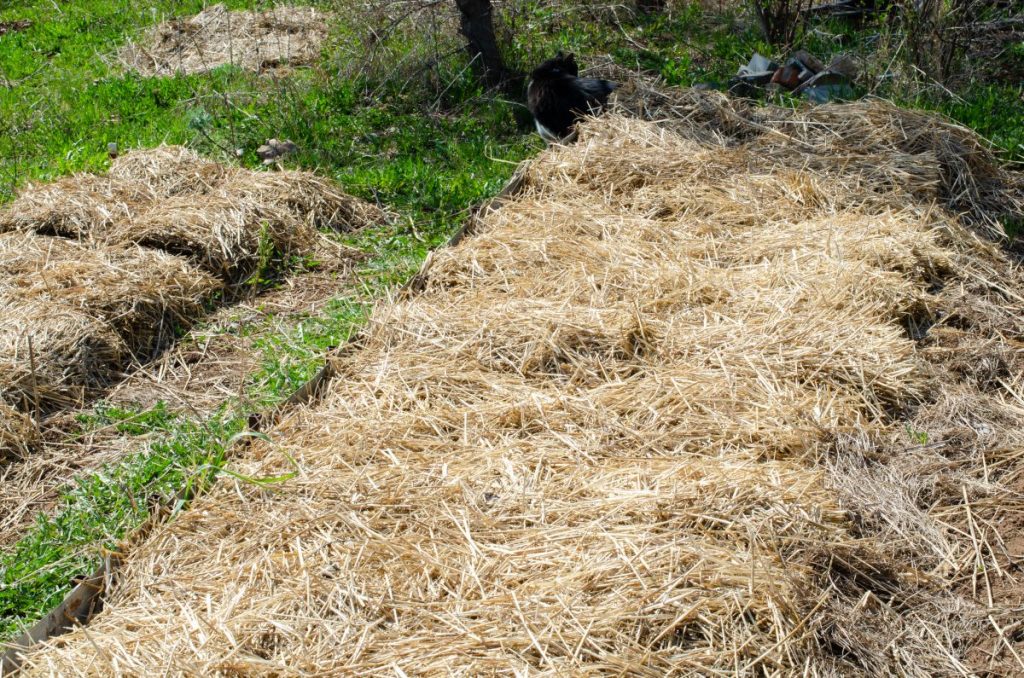
What is Deep Mulch Gardening?
Like the name suggests, deep mulch gardening is a method of growing plants in deep layers of organic material.
Leaves, compost, manure, hay, straw, wood chips, pine bark mulch, cypress mulch and other organic materials can all be used for deep mulch gardening.
There’s no one right or wrong way to do it. So you can make use of whatever materials you’ve got on hand.
The idea of deep mulch gardening was first proposed by author Ruth Stout in the 1950s.
Her book, “Gardening Without The Work,” lays out an alternative to growing plants in beds of tilled soil.
Deep mulch no till gardening adds nutrients and organic matter to your garden. It also helps to keep moisture in the soil as well as blocking out weeds from growing by restricting sunlight.
How many inches deep should mulch be? Generally, the materials we’ve listed above are layered on top of each other to a depth of about 20 to 60 cm (8 to 24 inches).
You might also be wondering “Can you plant on top of mulch?”
The answer is yes, you can plant into deep mulch garden beds immediately if desired. Although it’s usually recommended to prep your beds in the fall and wait to plant until next year.
That way the materials like straw and wood chips can begin to break down. Bacteria and worms will also have a chance to take up residence in the new growing medium as well.
Looking to create your dream property in the country? Our article How To Start a Homestead: Step By Step Beginners Guide will help.

How Does Deep Mulch Gardening Tie Into Homesteading?
Deep mulch gardening is a natural tie-in to both homesteading and permaculture.
On the homestead, you want to maximize your outputs while minimizing the amount of time and effort required.
You also want to minimize the amount of waste that you’re producing.
Deep mulch gardening allows you to achieve all of these requirements.
Pretty much any kitchen scraps or organic matter on your homestead can be used to create more deep mulch gardens.
So you get a closed-loop cycle where everything on your homestead helps to produce even more food for you.
Deep mulch gardens make a great addition to any permaculture garden. See our article How To Start A Permaculture Garden: Step By Step Beginner’s Guide if you’re just getting started.
Step by Step Guide to Using the Deep Mulch Method
As we alluded to earlier, there are a lot of different recipes for creating your own deep mulch garden.
There’s no optimal or best way to mulch. It depends on what your climate and soil is like. As well as what natural resources are in abundance that you can make use of.
You can certainly truck in a bunch of wood chips and compost to create your deep mulch garden. But we feel like that sort of defeats the purpose.
For example, so many homeowners bag up or burn a garden’s worth of leaves every autumn. Why destroy or ship away all of that organic matter?
Especially if you go and buy compost afterwards.
So without further ado, here’s how to create your own deep mulch garden.
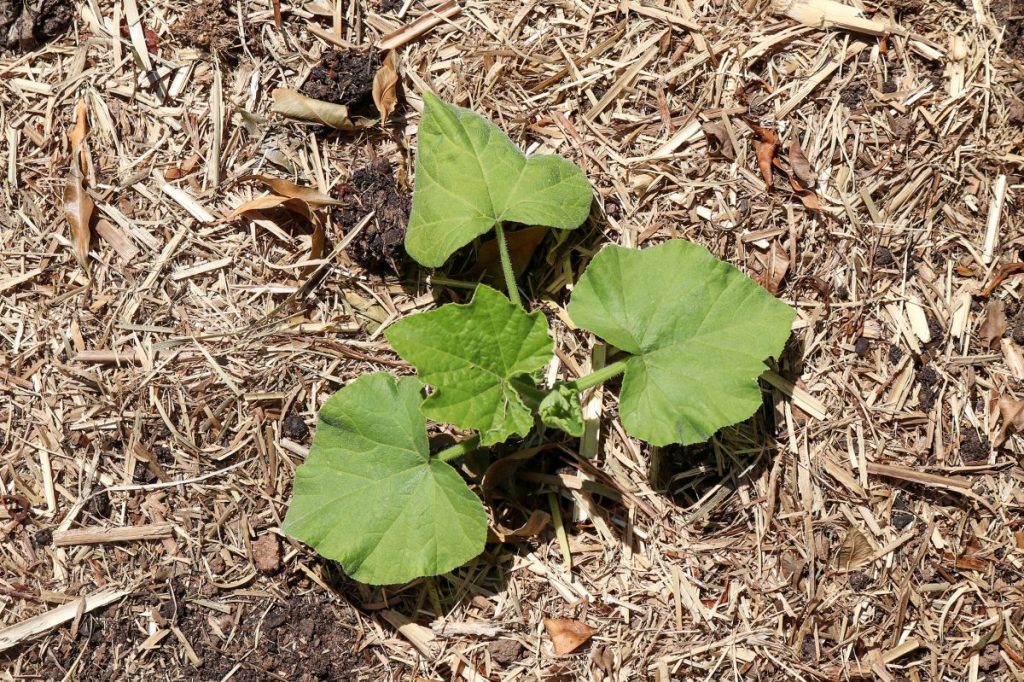
Step 1: Decide Where Your Deep Mulch Garden Will Go
A deep mulch garden is made up of quite a bit of material. If you ever want to move it in the future, it will be quite a hassle to transfer all of it from one spot to another.
So it’s best to observe your available land for a while. See which areas of your homestead get an adequate amount of sun, and where water drains well.
The worst thing you could do is put all of the work into creating a deep mulch garden. Only to find that it’s in a shady spot with pooling water after it rains and nothing will grow there.
The good news is you don’t need to worry about the existing soil in the area.
That’s since you’re likely adding a foot (30 cm) or more of organic matter. So it doesn’t matter if the ground underneath is rocky, sandy or full of clay.
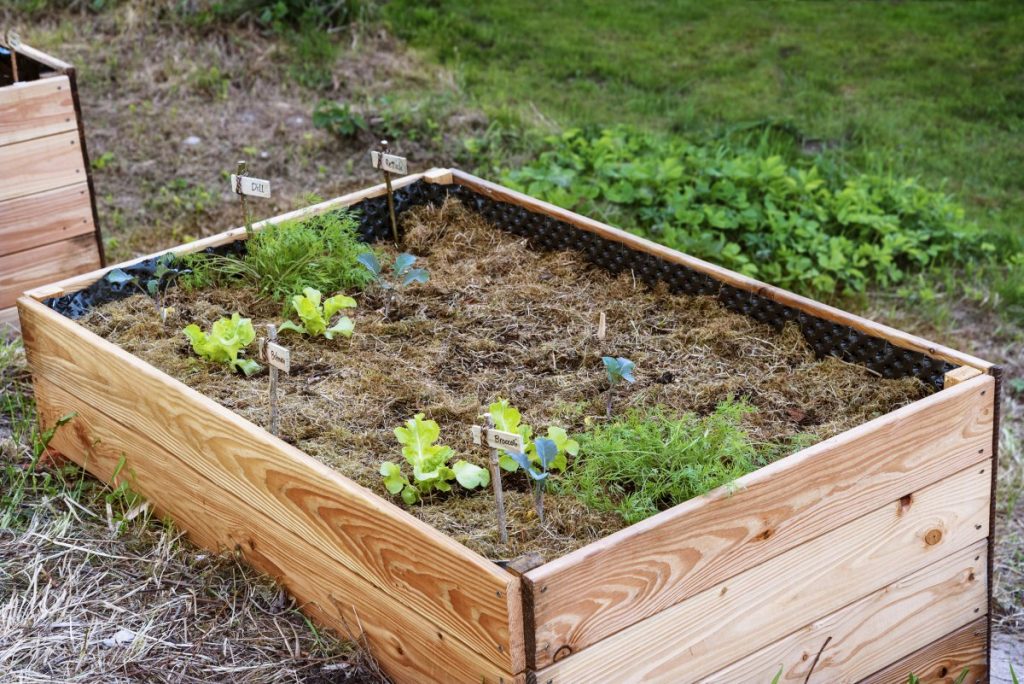
Step 2: Mark Out Your Garden
It’s best to have the spot for your new garden all marked out before you start layering organic material onto it.
First, cut back any weeds or other existing vegetation on the spot where your garden will grow.
Since deep mulch gardening is a no-till method, you don’t need to worry about pulling out all of the weeds or grass. But you don’t want to have them sticking up and getting in the way either.
A string or chalk line are all you need to make sure that your garden has nice straight edges.
Step 3: Lay Down Cardboard
The base of your deep mulch garden should be a layer of cardboard. Alternatively, you can use several layers of newspaper.
One layer of cardboard is sufficient. But you can always add extra layers. They’ll just break down over time. And the more layers that you use, the less likely it is that weeds will get through.
Start by watering the entire garden area thoroughly before you lay down the cardboard.
Then once all of your cardboard or newspaper is in place, water the entire area again. This will help keep the cardboard in place and begin the process of breaking it down.
Step 4: Add Organic Matter
This is the biggest and most labor-intensive step in the process of creating your deep mulch garden.
It’s not difficult though. All you need to do is pile on your choice of organic matter.
If you’re familiar with the “lasagna gardening method,” you’ll want to do something similar here. Basically you’ll be alternating between layers of different materials.
Water your garden bed with each layer that you add. This will help all of the different organic materials to stick together. And it will also kick-start the composting process of the entire pile.
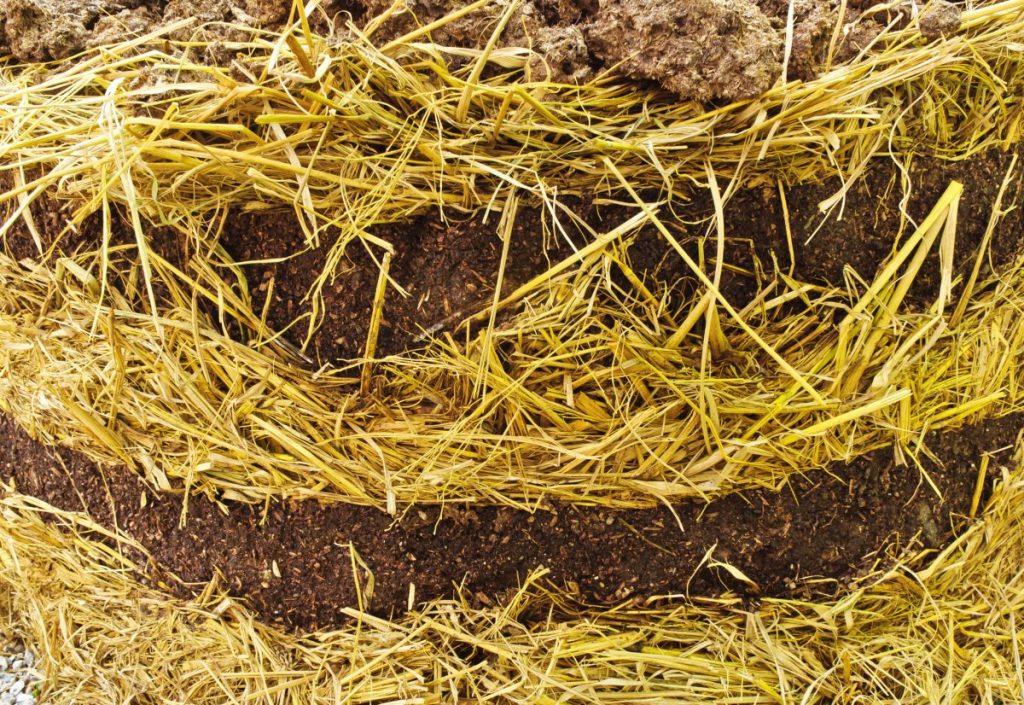
Step 5: Plant (or Wait For Your Mulch to Break Down)
If desired, you can start planting vegetables or herbs into your deep mulch garden immediately.
Simply open up a hole with your hand, put your seedlings inside, and then close the hole that you’ve created back up again.
However, you probably want to avoid planting directly into your deep mulch garden during the summer.
In hot weather especially, the inside of your mulch piles will be actively composting. Hot compost piles can reach temperatures of 50 – 77 C (120 – 170 F.) Which can easily burn and kill your plants.
That’s why we recommend creating your deep mulch garden beds in the autumn and allowing them to begin breaking down until spring.
Different mulch mixes will perform better or worse depending on your climate. Be sure to experiment with different mixtures and see what works best for you.
Deep mulch gardens can be used to quickly turn backyards into fertile urban farms.
See our article Urban Farming Ultimate Guide and Examples for more information on urban farming.
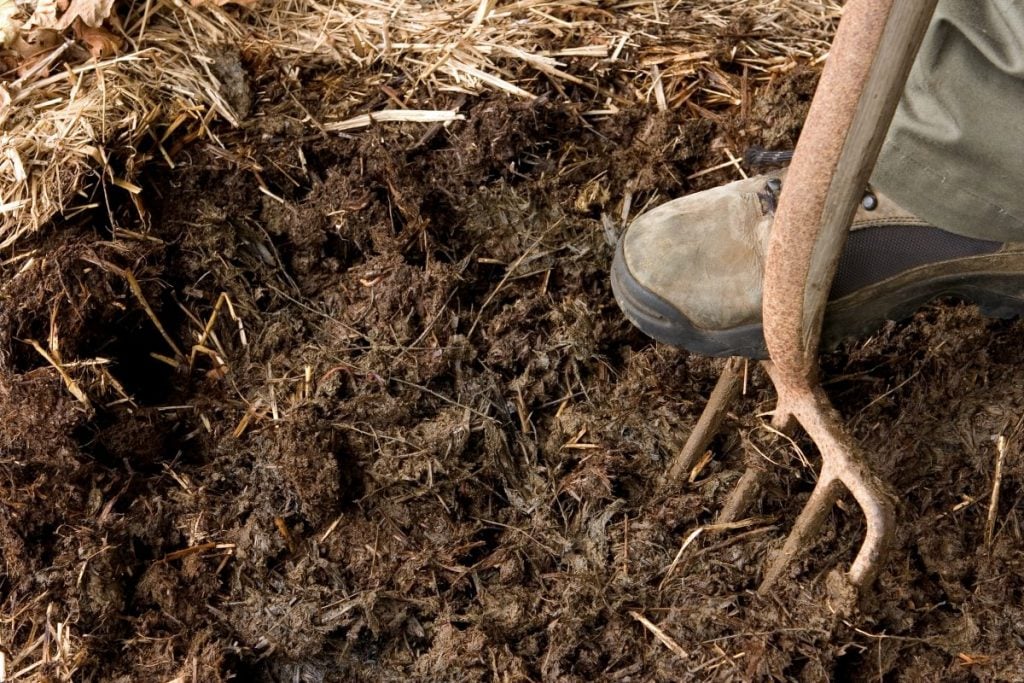
Common Deep Mulching Issues and How to Address Them
There are several common problems that you might run into when mulching for the first time.
Luckily, they’re all fairly easy to identify.
1. Mulch Too Thick or Not Thick Enough
If you make your mulch too thick over top of existing plants, it can suffocate them. If you don’t use enough mulch, once it’s fully broken down there won’t be enough compost produced.
You might be wondering “How deep should I mulch my vegetable garden?”
We recommend erring on the side of too much mulch, rather than not enough. Then plant seedlings directly into the top of your mulch to ensure they get enough sunlight.
Most sources recommend mulching to a depth of about 20 to 60 cm (8 to 24 inches.)
Oxygen starvation or root rot can sometimes occur if mulch is too thick. This is more of a problem for trees or shrubs than shallow-rooted vegetables usually.
Too much mulch can cause plant roots to become waterlogged, since it slows evaporation and drainage.
Roots need to get some oxygen through the soil to survive. If they’re constantly sitting in water, the plant will die.
So we recommend waiting until your mulch pile breaks down for at least a year before planting trees or shrubs in your deep mulch garden.
Alternatively, you can try to incorporate more large, coarse material like hay into your mulch piles. This will allow for better water drainage and airflow.
2. Using Straw Treated With Pesticides
If you’re adding straw to your deep mulch garden, it’s important to ensure that it’s organic and free of pesticides and herbicides.
Some plants like tomatoes are very sensitive to these chemicals and won’t grow if these chemicals are present in your mulch.
The same is true even for animal manure. If horses are fed hay that was treated with chemicals, they’ll still be present when you add their manure to your garden.
If you end up adding contaminated straw or manure to your garden, there isn’t much you can do to immediately fix the situation.
You’ll either need to wait a few years for the chemicals to naturally break down. Or you can remove all of the material and start over.
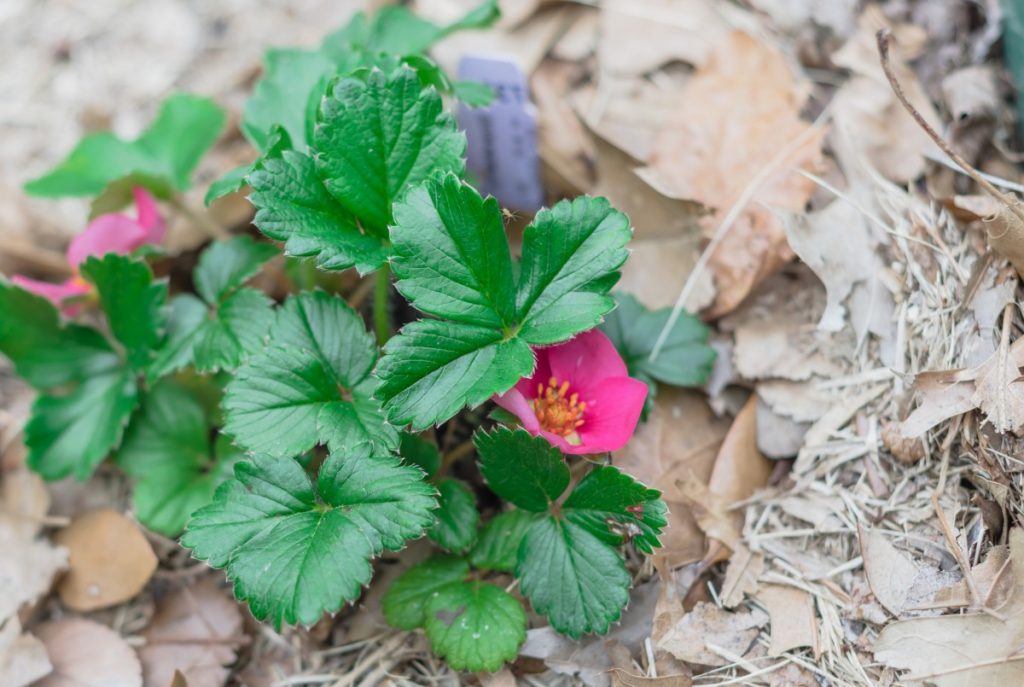
3. Disease
The conditions that are ideal for composting are also unfortunately ideal for other organisms as well.
Various kinds of mold, fungus, and bacteria love the wet, hot, dark conditions that mulch provides.
Try to avoid adding any organic matter that is already showing signs of disease or fungus into your deep mulch garden to minimize the risk.
4. Imbalanced Soil pH
The pH of your soil can be largely affected by what types of materials you’re including in your mulch.
For example, pine wood chips are quite acidic. If you add them to mulch year after year, it will start to make your soil more acidic as well.
Hardwood starts off acidic, but actually becomes alkaline as it decomposes and takes your soil in the opposite direction in terms of pH.
Adding too much green materials like grass clippings to your mulch can cause too much nitrogen in your soil, which some plants might not be able to handle.
On the other hand, many types of bacteria need a supply of nitrogen to break down your mulch. So it’s all about striking the proper balance.
This is why it’s important to use a mixture of many different materials when creating a deep mulch layer. As well as making sure to apply them in many thin layers.
That way, hopefully the high pH materials that you add will offset the low pH ones, and vice versa.
If you suspect your deep mulch garden has a pH imbalance, you can use test kits to confirm.
Imbalanced pH can be remedied by adding appropriate new materials to bring the pH up or down as required.
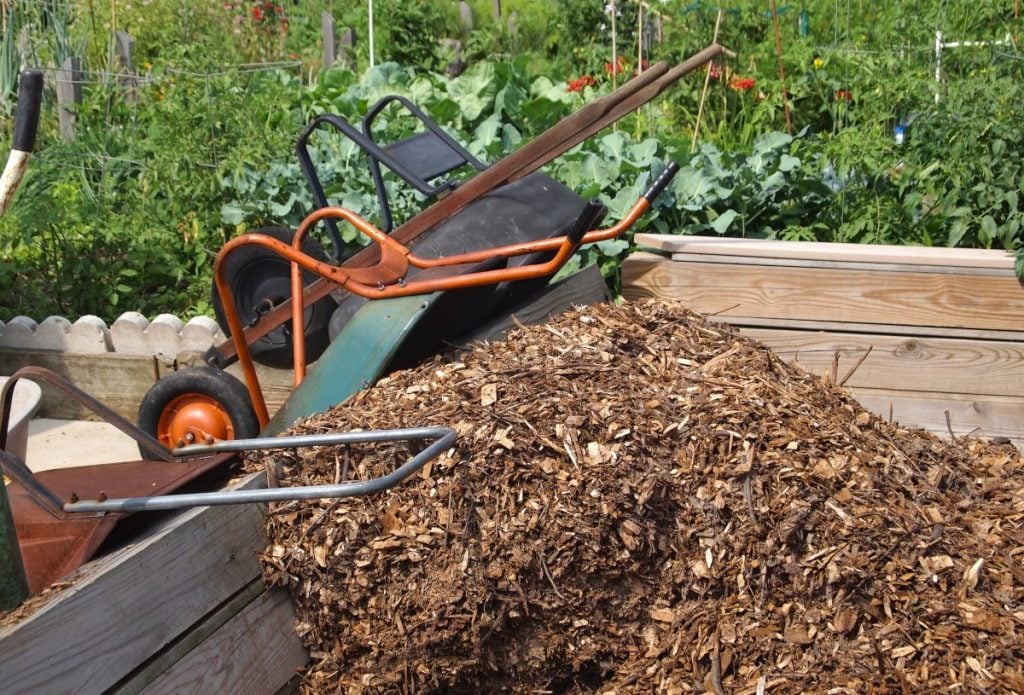
5. Using The Wrong Kind of Mulch
Not all mulch is created equal. Some types of mulch work better for some plants than others.
For example, pine bark mulch or cypress mulch is often used as a mulch around trees and decorative plants. But it’s not a good choice in your garden.
Using bark as mulch will cause vegetables and herbs to wilt. It also takes years longer than other materials to break down.
6. Weeds Popping Up
If your mulch isn’t deep enough, weeds will still be able to poke through.
This is why we lay down cardboard or several layers of newspaper at the bottom of our mulch piles before we begin adding organic matter.
Some particularly invasive weeds may still be able to push through though.
The remedy for this is fairly simple. Just add more mulch to your beds to make it even harder for the weeds to push through.
When making new gardens in the future, consider adding multiple layers of cardboard to reduce weed problems.
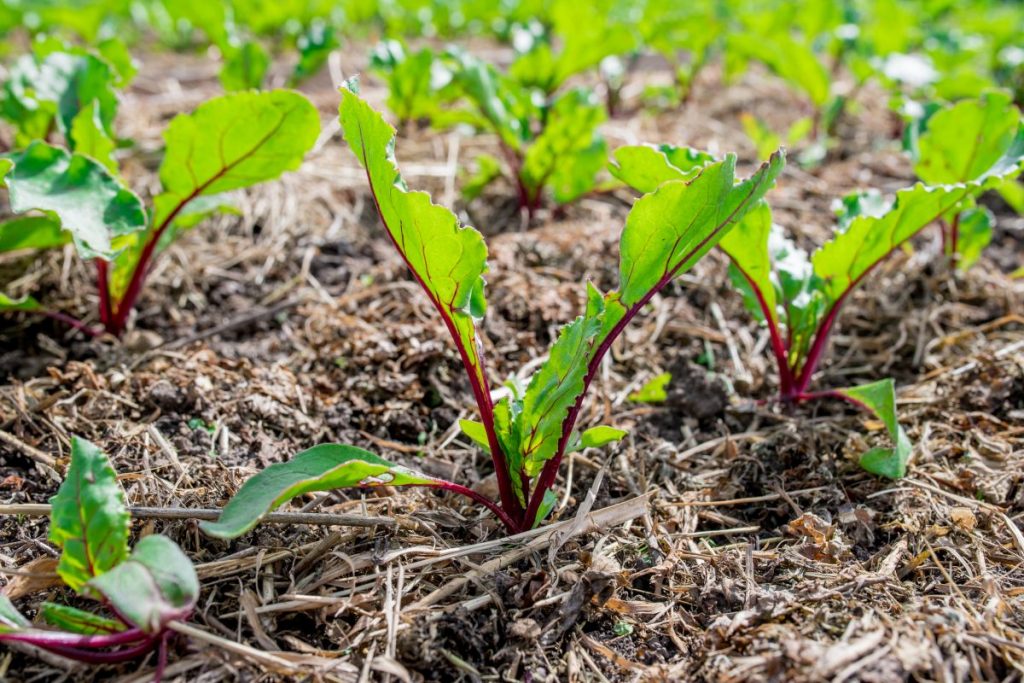
Pros and Cons of Deep Mulch Gardening
Like with any gardening technique, there are pros and cons. Be sure to take these into consideration to determine if a deep mulch garden is right for you.
Pros
Helps retain moisture – A deep mulch garden prevents evaporation and erosion. So you’ll need to water your crops less frequently.
Prevents weeds – Thick layers of mulch prevent weed seeds from getting the sunlight that they need to germinate and sprout.
Pulling weeds is one of the most time and labor intensive activities in the garden. So if you can avoid it, you’ll save tons of time.
Adds nutrients and organic matter to your soil – Many conventional gardeners find they need to add fertilizer or other additives to their garden every year.
But with deep mulch gardening, your plants get all of the nutrients that they need.
Can be used on any soil type – It doesn’t matter if your soil is heavy clay or soil. Or even full of rocks. Your deep mulch bed is created by piling material on top.
So it doesn’t necessarily matter what’s underneath. You’re literally building new soil from the ground up.
After a few years, you can have several feet of thick, rich compost where there was previously only an inch or two of topsoil.
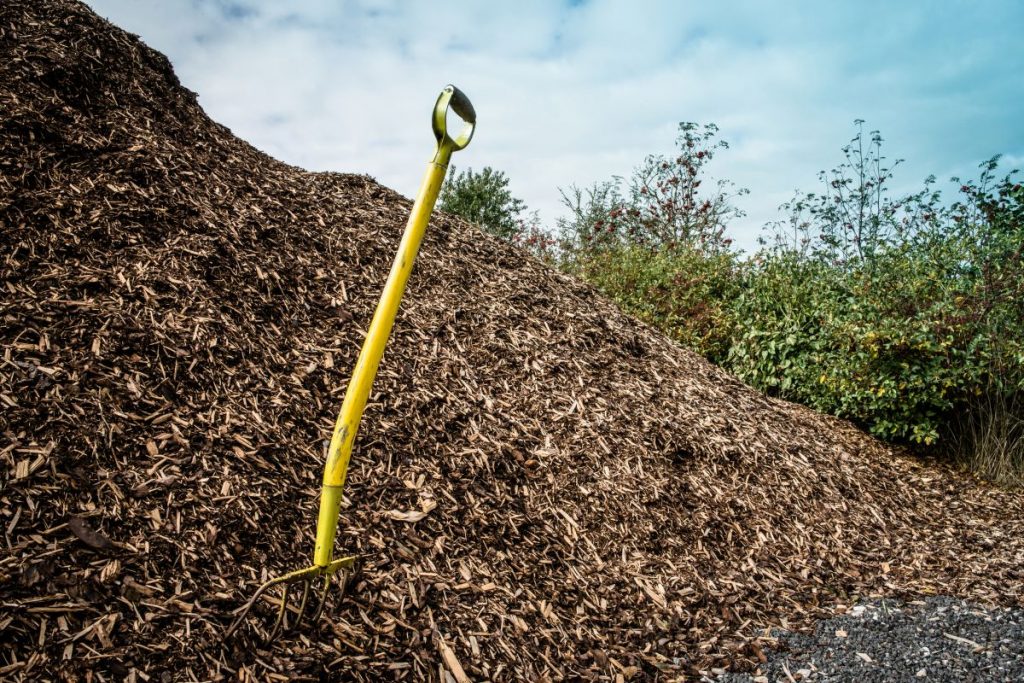
Cons
Some people find it unsightly – Your deep mulch garden will break down and level out over time. But when you first create it, you’ll have a tall pile of organic matter.
If your neighborhood has an HOA (homeowner’s association), you might not be allowed to have big piles of straw and compost in your yard.
Setting it up is hard work – Creating a pile of mulch that’s sometimes several feet (or nearly a meter) thick means that you’ll be transporting and hauling a lot of heavy material.
The components can be expensive – Especially if you don’t have access to free compost, straw, hay, wood chips, and other material.
If you plan ahead and save lots of leaves and other materials around your homestead, it’s possible to create a deep mulch garden with little or no cost though.
Compost can get too hot – In summer, the middle of your deep mulch garden will likely be breaking down and composting inside at high temperatures.
If you plant into your mulch right away, it can be so hot that it can kill plants. So you might need to wait and allow your mulch to break down for several months before planting.

Are You Ready To Create a Deep Mulch Garden?
Now you know what a deep mulch garden is. Plus, how to create one, and what the pros and cons of this gardening style are.
There are lots of different gardening methods and techniques to choose from.
A deep mulch garden might be exactly what you need in your situation.
Or you might decide that something like aquaponics works better in your situation. (See A Beginner’s Guide to Aquaponics to learn more about aquaponics.)
A deep mulch garden is one way to grow food. It cuts down on weeding and external inputs.
Ultimately it’s up to you to decide what your ideal garden or homestead will look like.
